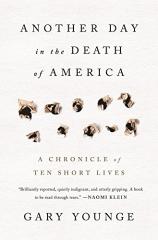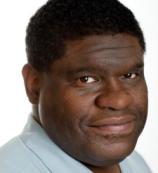Another Day in the Death of America: A Chronicle of Ten Short Lives
Review
Another Day in the Death of America: A Chronicle of Ten Short Lives
What do the rural town of Marlette, Michigan (population 1,879) and the city of Chicago have in common? The tragic fact is that in a 24-hour period spanning November 23-24, 2013, both were home to a young male whose life was ended in an instant by gunfire. The stories of Tyler Dunn, age 11, of the placid Michigan town that bills itself "The Heart of the Thumb," and Tyshon Anderson, age 18, from gang-infested South Chicago, are but two of the 10 narrated by Gary Younge in this devastating portrait of lives cut short by a bullet on that same day.
Born and educated in Britain, Younge moved to the United States in 2003 and lived here until he returned to London in 2015. He's a fellow at the Nation Institute and a columnist for the Guardian and the Nation. ANOTHER DAY IN THE DEATH OF AMERICA draws upon both his dogged reporting (handicapped in several instances by superficial police investigations and the unwillingness of family members of the deceased to cooperate) and extensive research to illuminate, through the particularity of each of these deaths, the complex and vexing subject of why nearly 2,500 children and teens succumb to gun violence in the United States each year.
"ANOTHER DAY IN THE DEATH OF AMERICA draws upon both [Younge's] dogged reporting...and extensive research to illuminate...the complex and vexing subject of why nearly 2,500 children and teens succumb to gun violence in the United States each year."
Though killings like those of Trayvon Martin and Michael Brown (whose deaths bracketed the date selected for these stories) have achieved more notoriety, Younge's patient and thorough investigation draws back the curtain on the daily unremarkable toll that makes it 17 times more likely that American teens will die from gun violence than their peers in other developed countries. Sadly, as Younge acknowledges, the gun deaths of young people he describes, none of which involved law enforcement officers, aren't necessarily the only ones that occurred on the fateful date, but instead were the ones that were reported.
While each of these lives --- seven black, two Hispanic, one white --- ended in the same way, the circumstances that led to the fatal shootings differ markedly. Tyler Dunn died when the rifle his 12-year-old friend retrieved from an unlocked closet accidentally discharged. Tyshon Anderson was deeply involved in Chicago's gang culture and may himself have been implicated in murders when he was executed in a mob-style hit.
Others, like Kenneth Mills-Tucker, of Indianapolis, and Samuel Brightmon, of Dallas, were gunned down in seemingly random shootings. Newark's Gary Anderson may have been the victim of mistaken identity after he donned a red hoodie before going out on the last night of his life. In the most inexplicable killing, nine-year-old Jaiden Dixon, the youngest victim, was murdered early one morning when he answered the door to greet his step-brother's enraged father armed with a handgun.
These brief descriptions reveal that some of Younge's subjects clearly were more sympathetic than others. He makes no effort to evade that fact, but also makes the explicit point that what should be Americans' revulsion over the steady toll of these deaths shouldn't depend on a judgment about the worthiness of the victims. "Many of the kids who would die in the next twenty-four hours were raised in tough circumstances and had messy lives," he concedes. It's easy for our anger to be aroused over the massacre of the 26 children and teachers at Sandy Hook Elementary School, while ignoring this relentless daily body count. "But so long as the gun narrative stops at protecting 'innocents' and 'babes,'" Younge argues, "it's difficult to see who will ever speak out for them."
Younge is quick to note the unique fondness of Americans for our guns. He's also unsparing of the National Rifle Association, which successfully has blocked funding for research by the Centers for Disease Control and Prevention into reducing gun deaths and lobbied against state legislation to prevent children's access to guns.
But ANOTHER DAY IN THE DEATH OF AMERICA is no superficial gun control screed. Instead, Younge presents a "snapshot of a society in which these deaths are uniquely possible and that has a political culture apparently uniquely incapable of creating a world in which they might be prevented." While not denying the importance of personal responsibility for life choices, until America addresses the issues of race and poverty described in these pages, he contends there's little hope of stemming this tide of killing.
The 10 victims whose lives Gary Younge profiles in this troubling book lived a total of 160 years, roughly the length of two normal lifespans in the United States. Had they not been killed in November 2013, some would have lived troubled lives that might well have ended violently on another day; others would have enjoyed a normal life expectancy in the same unremarkable way of most of us; and some, against substantial odds, might have accomplished noteworthy deeds. The common denominator of the all-too-brief lives of these children and teens is that they and others like them who will die senseless deaths are victims, not simply of guns, but of a society that seems to prefer turning its back on the conditions that make those deaths more likely rather than redressing them.
Reviewed by Harvey Freedenberg on October 14, 2016
Another Day in the Death of America: A Chronicle of Ten Short Lives
- Publication Date: October 4, 2016
- Genres: Current Affairs, Nonfiction
- Hardcover: 304 pages
- Publisher: Nation Books
- ISBN-10: 1568589751
- ISBN-13: 9781568589756





